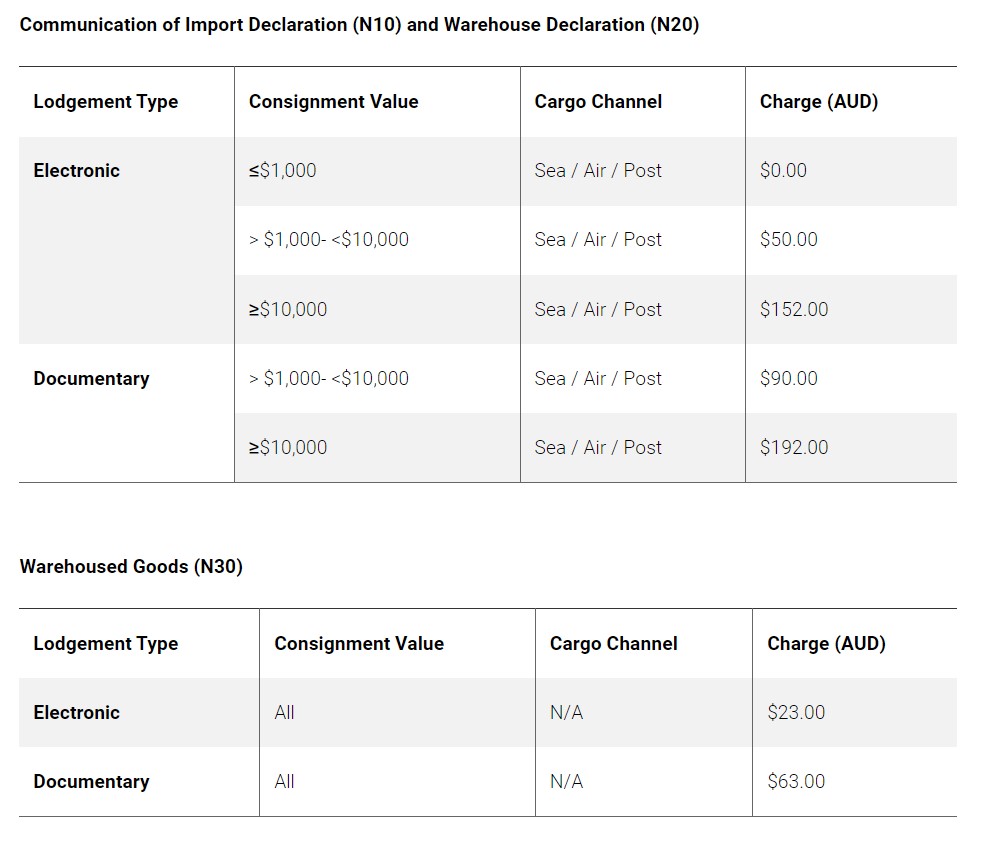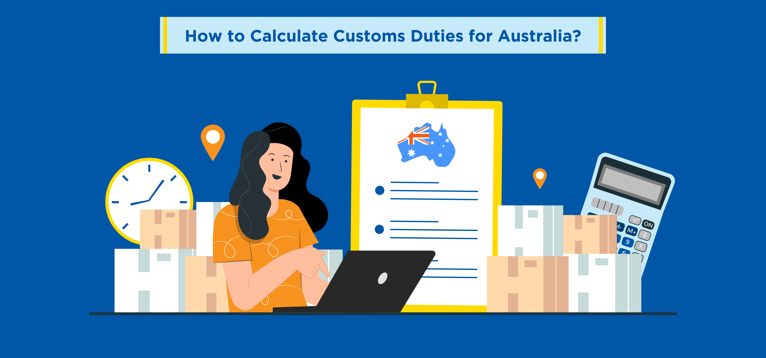All goods imported into Australia must go through customs clearance. One of the most confusing aspects of this process is calculating Australian import duties, customs fees, and applicable taxes. This article covers all these aspects for the benefit of individuals and import businesses.
We will discuss different factors that affect the cost of import as well as how you can take advantage of concessions schemes and trade agreements.
How to Calculate Customs Duty and Other Charges for Australia?
You need to consider several factors to calculate customs duty for Australia. These include the type of goods, country of origin, the value of goods, trade agreements, and so on. Here is a step-by-step guide to help you calculate Australian customs duties, taxes, and other charges for your imported goods.
Calculate the Value of Imported Goods
The import duty in Australia primarily depends on the value of the imported goods. Before you can calculate customs duty, you need to assign a value to your goods. This is necessary even if you do not have to pay any customs duties. This valuation will be a part of your import declaration and several other customs clearance documents.
For customs duties in Australia, you need to provide the transactional value of the goods. This value is usually the price paid to acquire the goods. You even need to assign a customs value to free-of-charge goods based on the cost of purchase, the price of identical goods, the computed value of producing the goods, etc.
The value of goods should be expressed in Australian Dollars (AUD). For this purpose, you need to use the exchange rates applicable on the day of the export.
You do not have to pay customs duty in Australia if the value of imported goods is less than or equal to AUD 1,000. Although, you have to pay import duty regardless of value if the imported goods include tobacco, tobacco products, alcohol products, prohibited items, or restricted goods.
Identify the HS Code of the Goods
Alongside valuation, you also need to know the HS Code for imported goods to calculate customs duty to pay in Australia. You can use the DAFT Free Trade Agreement Portal to identify the HS code associated with your imported goods.
The HS code will not only help you calculate Australian customs fees, but is also a necessary element for several customs clearance documents and procedures. You also need this code to identify the applicable preferential customs duty rates and concessions for your imported goods.
Find out Applicable Customs Duty
The applicable import duty rate for the majority of goods is 5%. But, this can vary depending on the type of goods and the country of origin.
There are two ways you can figure out the applicable Australian customs duties. The first is using tariff classification and the second is through the DAFT portal.
You can scan through the current tariff classification to check the customs duty for Australia. You will have to check the rates based on the country of origin, type of goods, valuation, and quantity.
Schedule 1 of the classification provides a list of countries of origin that get preferential rates for import duty in Australia. Schedule 3 contains rates of import duty for Australia for different goods. You can use schedule 2 to help you with categorising your goods. If you are importing goods from countries that have a Free Trade Agreement with Australia, you should check the import duty rates from schedules 4 to 14.
The second, and easier, way to figure out applicable customs duties in Australia is to use the DAFT Free Trade Agreement Portal. You need to input the HS Code of the goods and the country of origin.
The portal will provide information about the applicable import duty in Australia for your imports. It also tells you about the applicable Free Trade Agreements that are relevant to your imports. The portal will also give you details about the documentation required to claim the preferential import duty rates.
Calculate Import Processing Fees & Other Chargers
You also need to pay import processing charges based on the types of goods, import declaration, and the value of goods. These charges need to be paid in addition to import duty in Australia. Below is a table of applicable import charges for Australia.

Additionally, you also need to pay biosecurity charges for customs clearance. These charges are collected by ABF on behalf of DAFF for biosecurity checks. These charges are added to Australian customs fees based on the mode of transport for the imported goods. See the table below to check applicable biosecurity charges.

Finally, you need to check whether dumping and countervailing duties apply to your imported goods. These charges are levied if the imported goods harm Australian manufacturers.
Check for Concessions
You can get concessions on Australian import duties and taxes based on certain legislations, tax deductions schemes, and free trade agreements (FTA). The DAFT Portal will provide information on the applicable FTA concessions. But, you need to understand relevant programs and schemes to find out tariff concessions, tax deductions, and other applicable benefits. Check the concession schemes page on ABF’s website to see the list of available programs.
Calculate GST and other Taxes
Alongside import duty, you also need to pay GST and other applicable taxes in Australia to import goods, unless they are exempt from customs tax in Australia. Here is a list of goods that you can import without paying GST tax.
Aside from these items, you will have to pay 10% GST on imported goods valued at more than AUD 1,000. Additionally, you might have to incur other charges such as Wine Equalisation Tax (WET) and Luxury Car Tax (LCT). The applicable Australian customs tax is calculated on the sum of the following factors:
- Customs Value of the Imported Goods
- Payable Duties
- Cost of Transportation and Insurance
- Import Processing Charges & Biosecurity Charges
- Other applicable Australian import duties and taxes
You will need to pay 10% GST (or as applicable) on the sum of these charges. This Australian customs tax needs to be paid at the time of clearance.
How to Pay Import Duties, Taxes and Other Charges?
You need to pay all charges including customs duty, applicable taxes, and other charges before the goods are cleared by customs. You can pay the applicable Australian import duty charges and customs tax when you submit an import declaration. This can be done at an ABF counter or through Integrated Cargo Systems.
Conclusion
Be sure that you pay all applicable Australian customs fees and submit relevant documents for applicable concessions and preferential import duty rates. Breaches in customs clearance procedures may result in fines, legal action, or imprisonment depending on the severity of the importer’s actions.
When you engage PACK & SEND for imports from overseas into Australia, we manage all these matters on your behalf. Our Australian Import Services covers all aspects of logistics and customs clearance. We will ensure that your imported goods get cleared through customs without any trouble and that you enjoy the benefits of all available concessions in customs duty.
FAQs
What is customs duty?
Customs duty is a charge imposed by a governing authority when goods are transported across international borders. In most countries, the customs fee is applicable on imports as well as exports.
The rates or charges for customs duties depend on several factors such as country of export, country of import, value of goods, trade agreements, type of goods, and so on. Some goods (in certain quantities) can be imported or exported without paying any customs duty.
How much is customs duty in Australia?
The customs duty in Australia is 5% of the value of goods after converting into AUD. This rate applies to most goods, but it changes depending on the type of goods, value, and country of origin. Furthermore, you can import goods worth less than AUD 1,000 without paying any customs duty in Australia as long as the goods are not restricted or prohibited.
Image source: Australian Border Force
